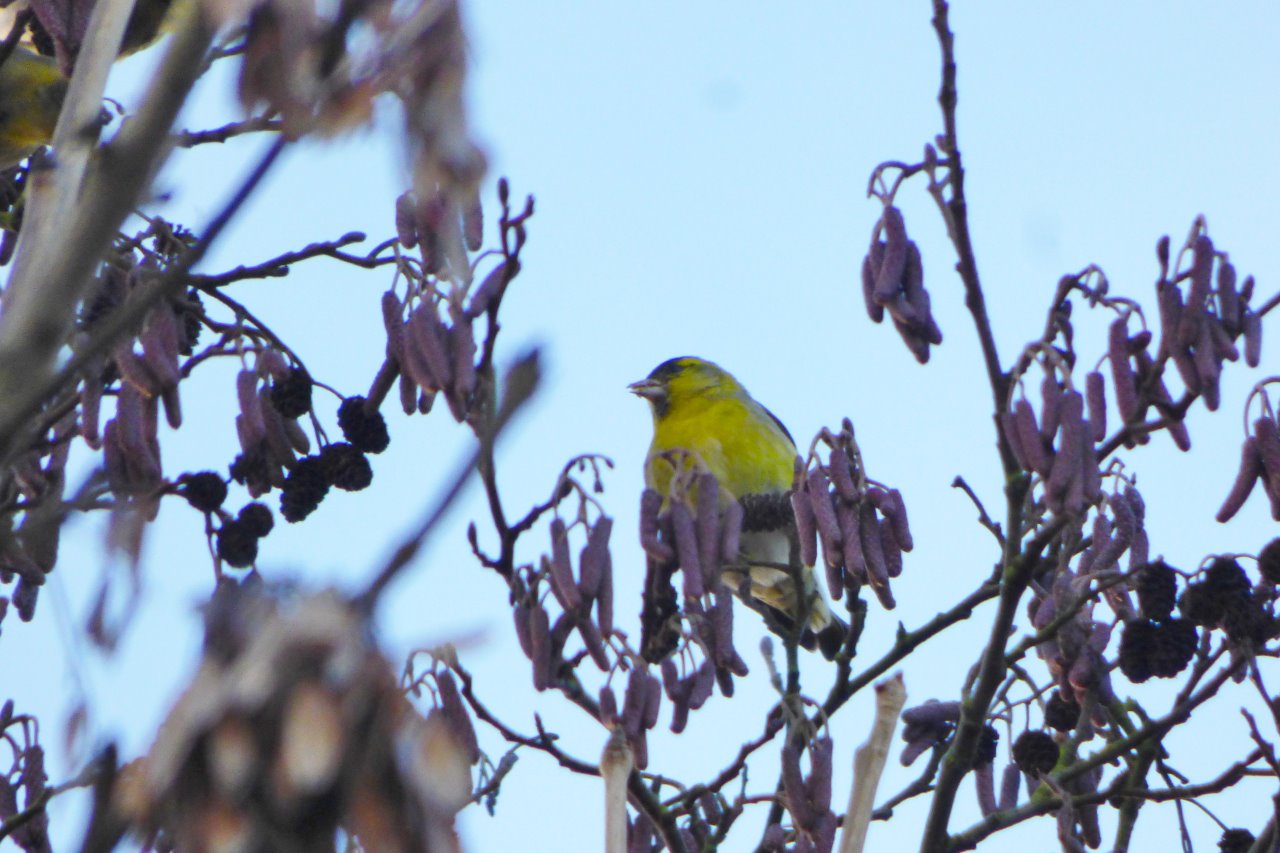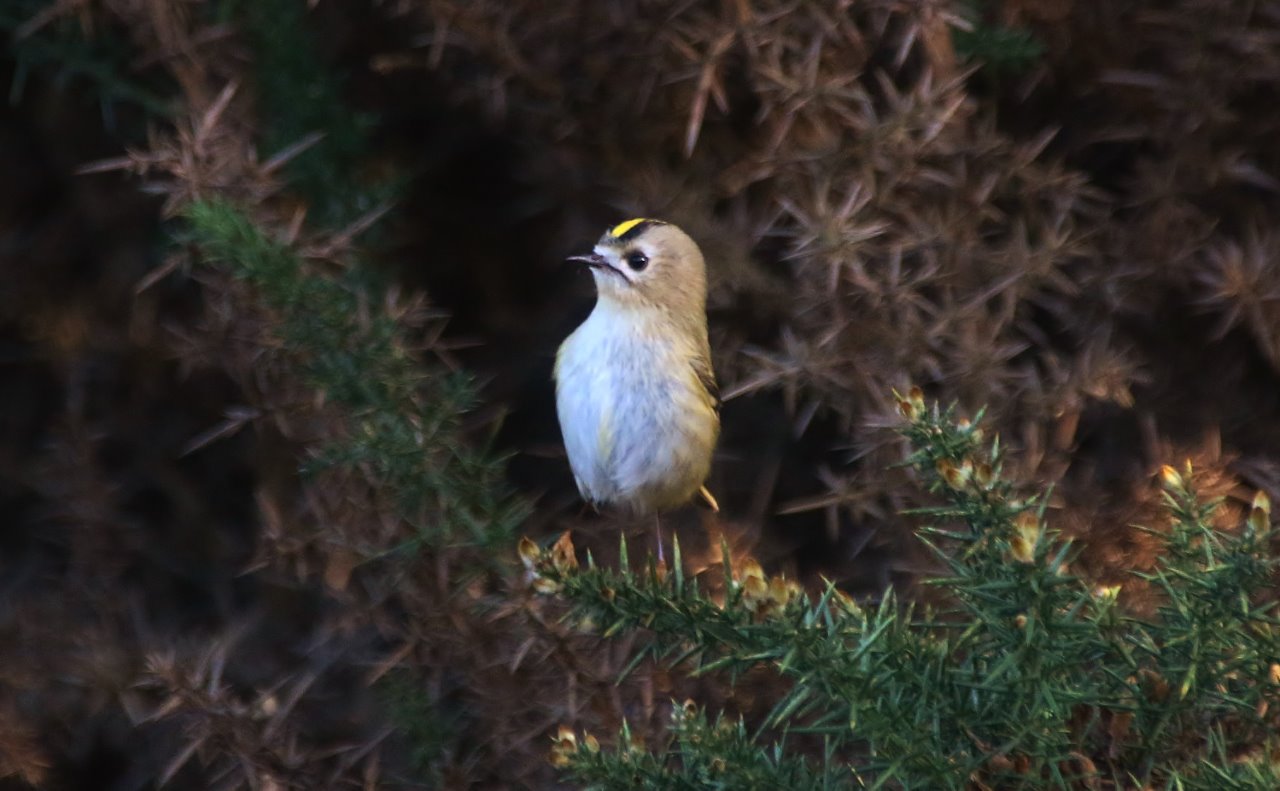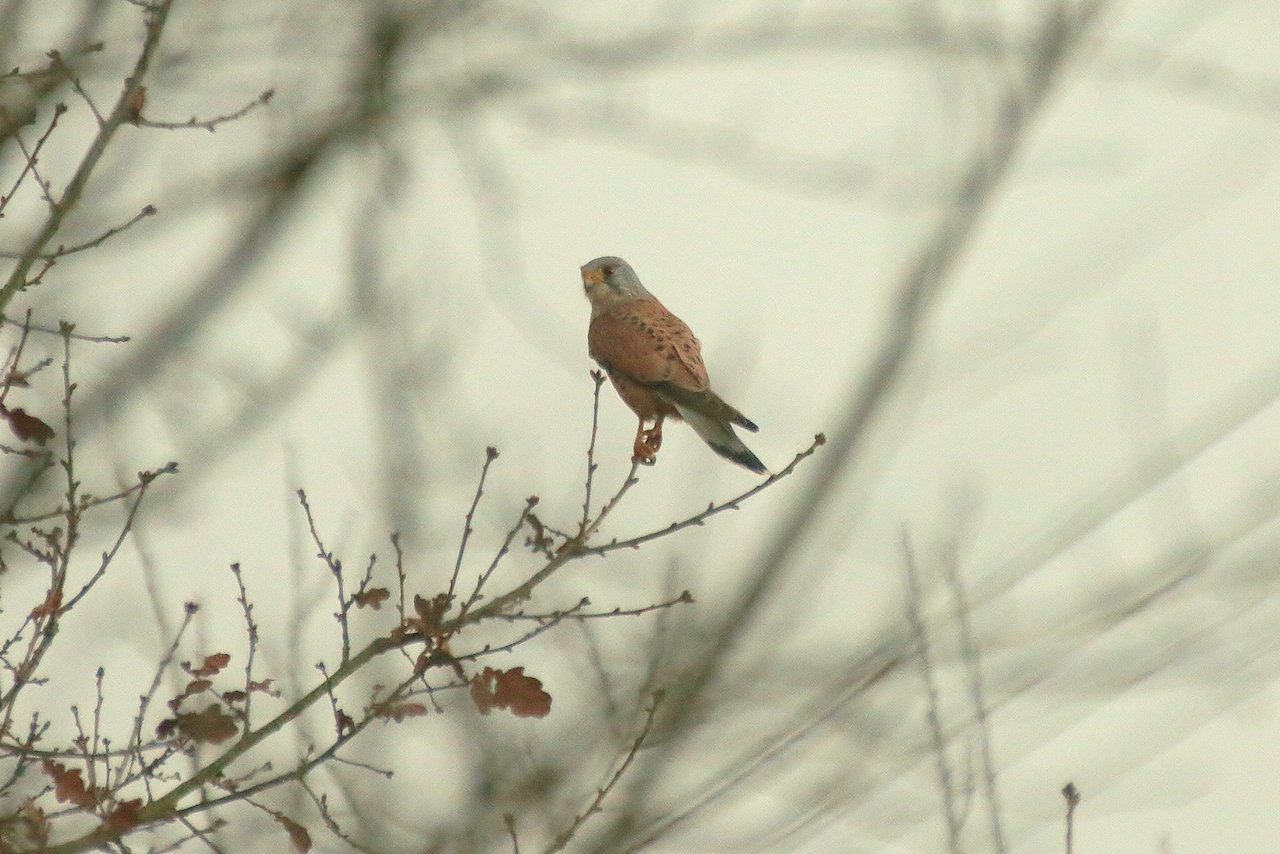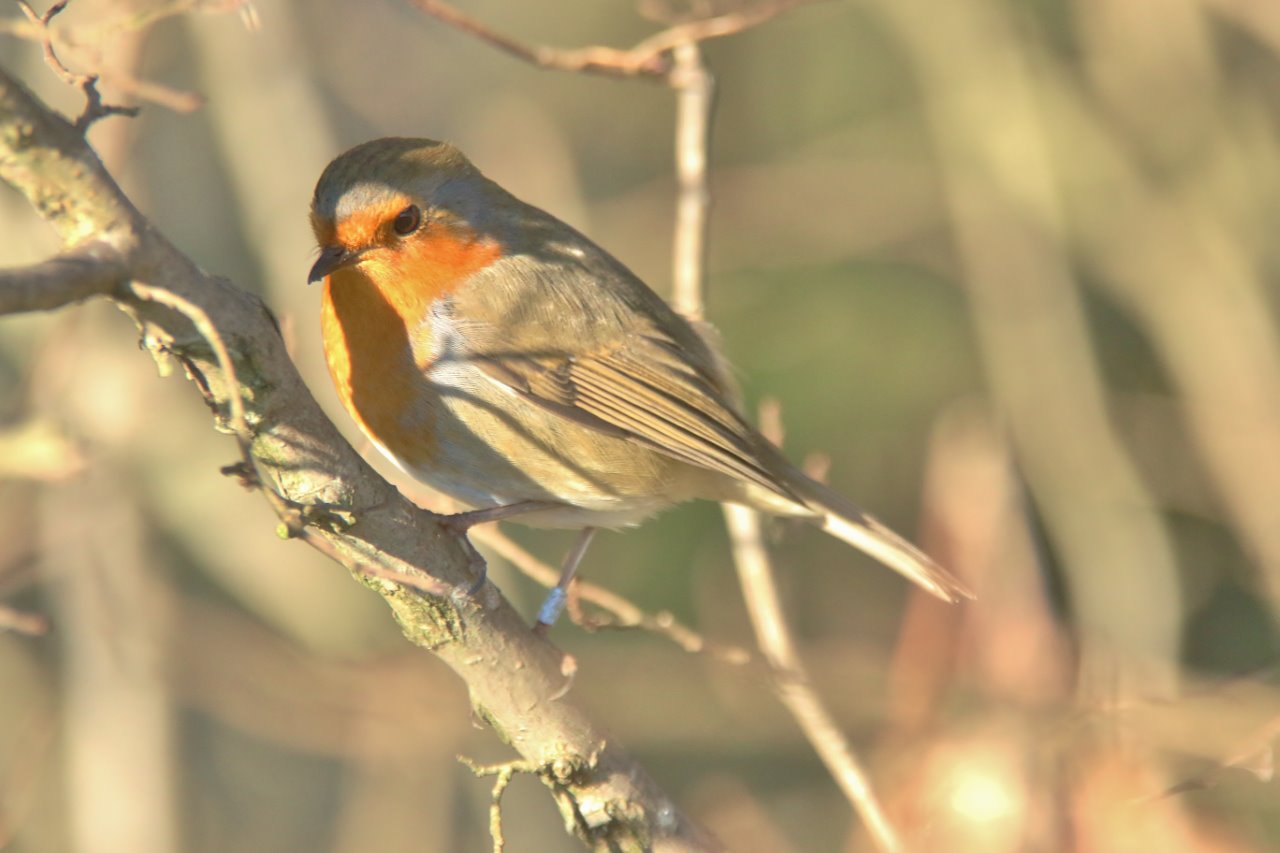 Abraham Lincoln
If given the truth, the people can be depended upon to meet any national crisis...
Abraham Lincoln
If given the truth, the people can be depended upon to meet any national crisis...
 Guildford news...
for Guildford people, brought to you by Guildford reporters - Guildford's own news service
Guildford news...
for Guildford people, brought to you by Guildford reporters - Guildford's own news service
Birdwatcher’s Diary No.101
Published on: 25 Jan, 2016
Updated on: 25 Jan, 2016
By Malcolm Fincham
As mentioned in previous reports, year listing the birds I have seen has never been a priority to me.
Although I do make some notes of what I see throughout the year, I have become far more interested in getting photographs, or at least record shots of the birds I see.
With mild but wet weather continuing to impede my photography during the start of 2016, my first real chance of getting down to my local patch with my camera to Stoke Nature Reserve, wasn’t until January 10.
The trip was threatened by ominous cloud formations and the inevitable heavy shower or two. I was able to add a few more bird sightings to my year list as well as grab a few photos.

Blackthorn showing a few sprigs of blossom by Stoke Lake. Click on pictures to enlarge in a new window.
To my surprise, due to the mild weather, a few sprigs of blackthorn were starting to blossom by the lakeside, at least two months earlier than usual.
Long-tailed tits were still actively moving around in small flocks. Great tits and blue tits appeared to be starting to pair up, with several individuals chasing each other around.
Adding a first to my year sightings was a treecreeper, looking for insects to feed on in the crevices of a tree bark.
Meanwhile, a male kestrel patrolled the area in the hope of a small mammal to feed on.
A common sight at this time of the year around the reserve are grey herons, often seen feeding on the flooded scrape or flying though.
By the end of the following week the weather turned much cooler and temperatures dropped considerably. Enough to freeze the river along the canal path leading to Stoke Lock.
The flooded scrape by Stoke Lock was also frozen over leaving just black-headed gulls skating on the ice.

Siskin males and females are easily recognised with their overall green grey plumage, males are brighter than females.
High in the alder trees along the riverbank, a flock of siskins could be seen feeding on their seeds.

Siskins flit about in the topmost canopy of seed-bearing trees. They’ll often cling upside down to branch tips to empty hanging cones of their seeds.
Compared to last year when I didn’t see any in the area, they seem to have irrupted south of the UK in good numbers this winter.
Redwings on their annual winter visit to our shores from Scandinavia could also be seen around the reserve in good numbers.
Along the towpath and across the board walk, an unobtrusive bird often overlooked, is the dunnock.
Once commonly known as the hedge sparrow as well as sometimes known as “shuffle-wing” – an old country name.
It was obviously a name inspired by the way the dunnock flicks (or shuffles) its wings while moving around quietly often at low level, in the trees and hedges.
With a large proportion of Stoke Lake frozen over on January 20, most of the waterfowl had congregated into one small area.
With two dabchicks I had photographed the previous day still present.
A drake shoveler seen on previous days on the flooded scrape had also made it over to the lake.
With many of the birds restricted to one small space a few skirmishes started to break-out.
Two pairs of coots were certainly not willing to share the same proximity.
For a brief while, to me, it looked like it was going to be a fight to the death.
Eventually the conflict was resolved, with two of them taking the inevitable ‘walk of shame’ across the thin ice to another part of the lake.
The teal usually seen on the flooded scrape seemed to have all moved to the flooded areas around the hide at the far end of the boardwalk, sheltered by the surrounding sallows.
At various parts of the reserve robins could be heard singing their mournful, yet tuneful song.
The most charismatic bird for me to see there has to be the kingfisher.
And on being fortunate, as I was, to seeing two together on one occasion, suggested to me that maybe they had paired up already? Although not quick enough to get a photo of them, I was able to creep up on one of them later that day and snap a few up-to-date shots.
Roe deer are among a few mammals worth looking out for around the reserve that are worth looking out for, especially at this time of the year, with no leaves on the trees to add to their camouflage, personally sighting at least four in the area recently.

Grey squirrels do not hibernate, so may be seen at all times of the year. However, in winter they are far less active, sleeping for long periods, sometimes several days at a time.
Grey squirrels remain active around the reserve too, even during cold spells, dispelling urban myths that they hibernate.
On visits to a few other locations around the Surrey countryside I was able to add a few more pictures as well as sightings to this year’s list. This included a pair of marsh tits in the village of Chiddingfold.
I also found time to visit Thursley Common. Here I was able to get my first sightings this year of Dartford warblers.

Goldcrests occur in many habitat types throughout the UK, however they do prefer conifers and mixed woodlands, in addition to these they will use parks, gardens, hedgerows.
A few close up shots of goldcrests added to my photos.
With my binoculars I was also able to pick out four lesser redpolls, and even got near enough for a few record shots before they flew off.
And although not getting a sighting of the elusive great grey shrike that still occasionally makes an appearance there, I was able to get a few pictures of a red kite hunting as it flew though.
Another trip out was to Cutt Mill pond at Puttenham where goosanders have been reported in the last few days.

Drake goosanders at Cutt Mill. Puttenham. These handsome diving ducks are a member of the sawbill family, so called because of their long, serrated bills, used for catching fish
These ducks are members of the saw bill family due to their long serrated bills used for catching fish. They breed in more northerly parts of the UK, but can occasionally be seen wintering locally.

"Found any?" - "Nope, it all looks green to me!" (See Opinion: The Future is Congested, the Future is Grey)
www.abbotshospital.org/news/">





Recent Articles
- Latest Evidence in Sara Sharif Trial
- Ash’s New Road Bridge Is Named – and November 23rd Is Opening Day
- Class A in Underwear Leads to Jail Sentence
- Historical Almshouse Charity Celebrates Guildford in Bloom Victory
- Notice: Shalford Renewable Showcase – November 16
- Firework Fiesta: Guildford Lions Club Announces Extra Attractions
- Come and Meet the Flower Fairies at Watts Gallery
- Updated: Royal Mail Public Counter in Woodbridge Meadows to Close, Says Staff Member
- Letter: New Developments Should Benefit Local People
- Open Letter to Jeremy Hunt, MP: Ash’s Healthcare Concerns


Search in Site
Media Gallery
Dragon Interview: Local Artist Leaves Her Mark At One of England’s Most Historic Buildings
January 21, 2023 / No Comment / Read MoreDragon Interview: Lib Dem Planning Chair: ‘Current Policy Doesn’t Work for Local People’
January 19, 2023 / No Comment / Read MoreA3 Tunnel in Guildford ‘Necessary’ for New Homes, Says Guildford’s MP
January 10, 2023 / No Comment / Read More‘Madness’ for London Road Scheme to Go Ahead Against ‘Huge Opposition’, Says SCC Leader
January 6, 2023 / No Comment / Read MoreCouncillor’s Son Starts Campaign for More Consultation on North Street Plan
December 30, 2022 / No Comment / Read MoreCounty Council Climbs Down Over London Road Works – Further ‘Engagement’ Period Announced
December 14, 2022 / No Comment / Read MoreDragon Interview: GBC Reaction to the Government’s Expected Decision to Relax Housing Targets
December 7, 2022 / No Comment / Read MoreHow Can Our Town Centre Businesses Recover? Watch the Shop Front Debate
May 18, 2020 / No Comment / Read More


































Recent Comments